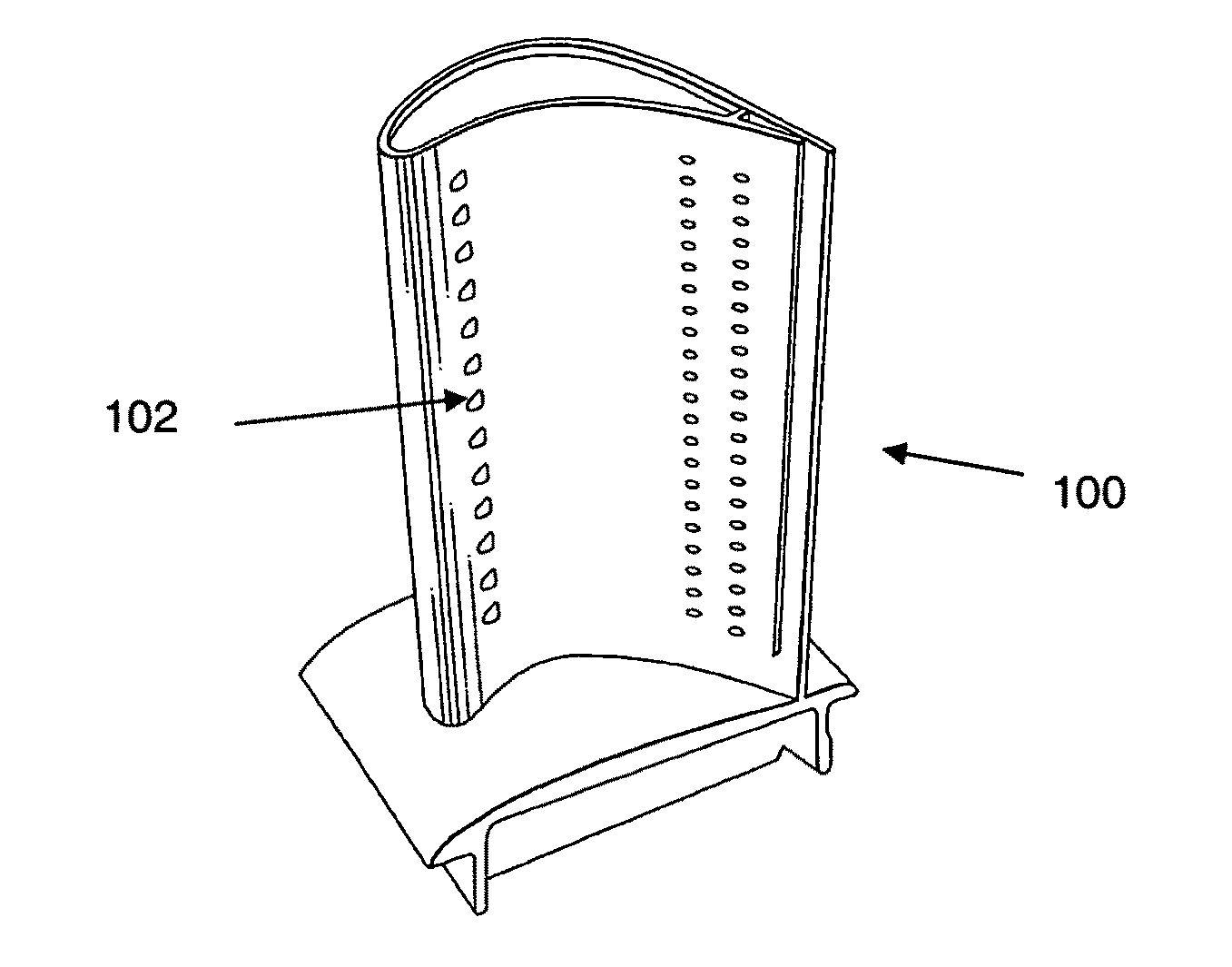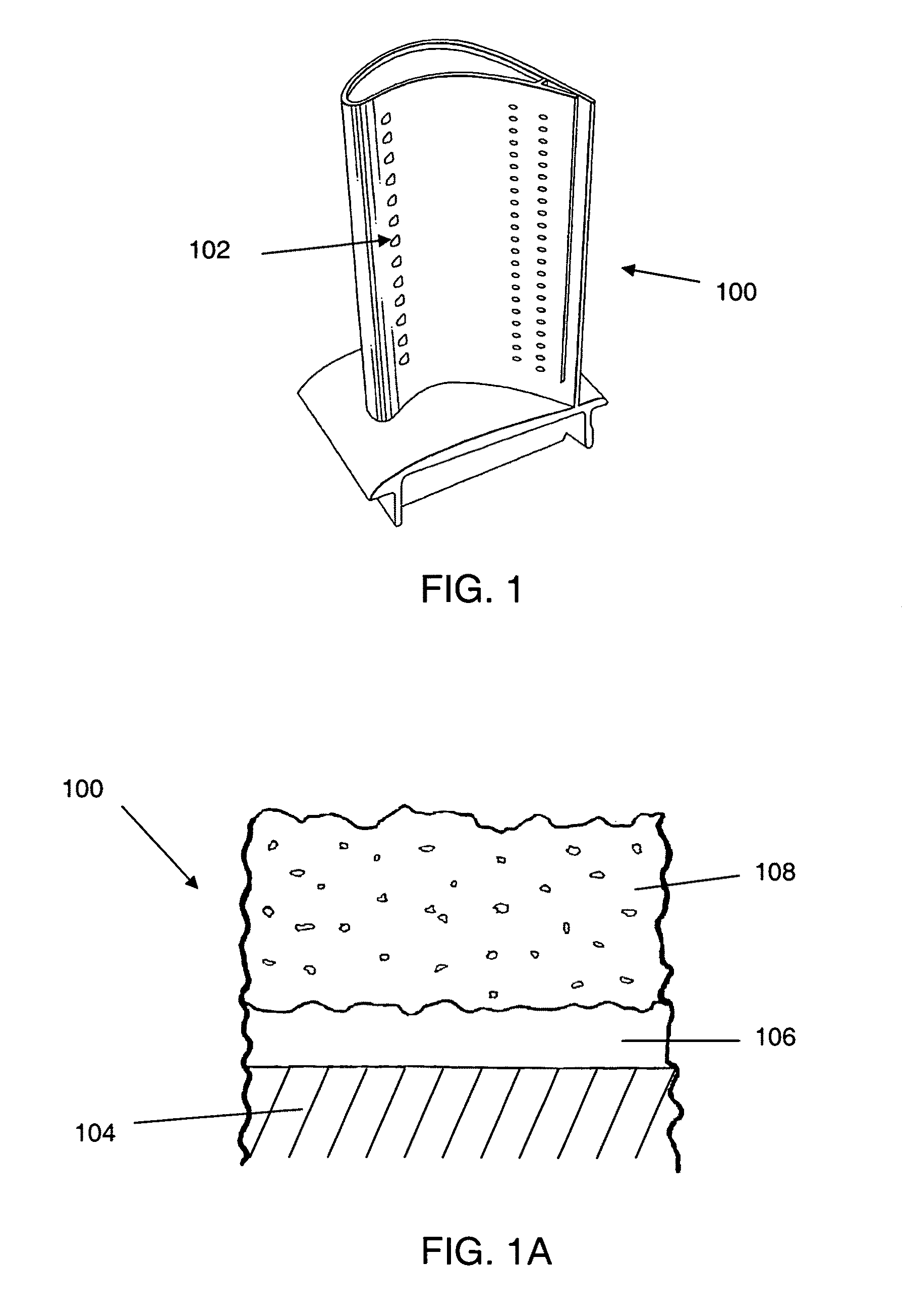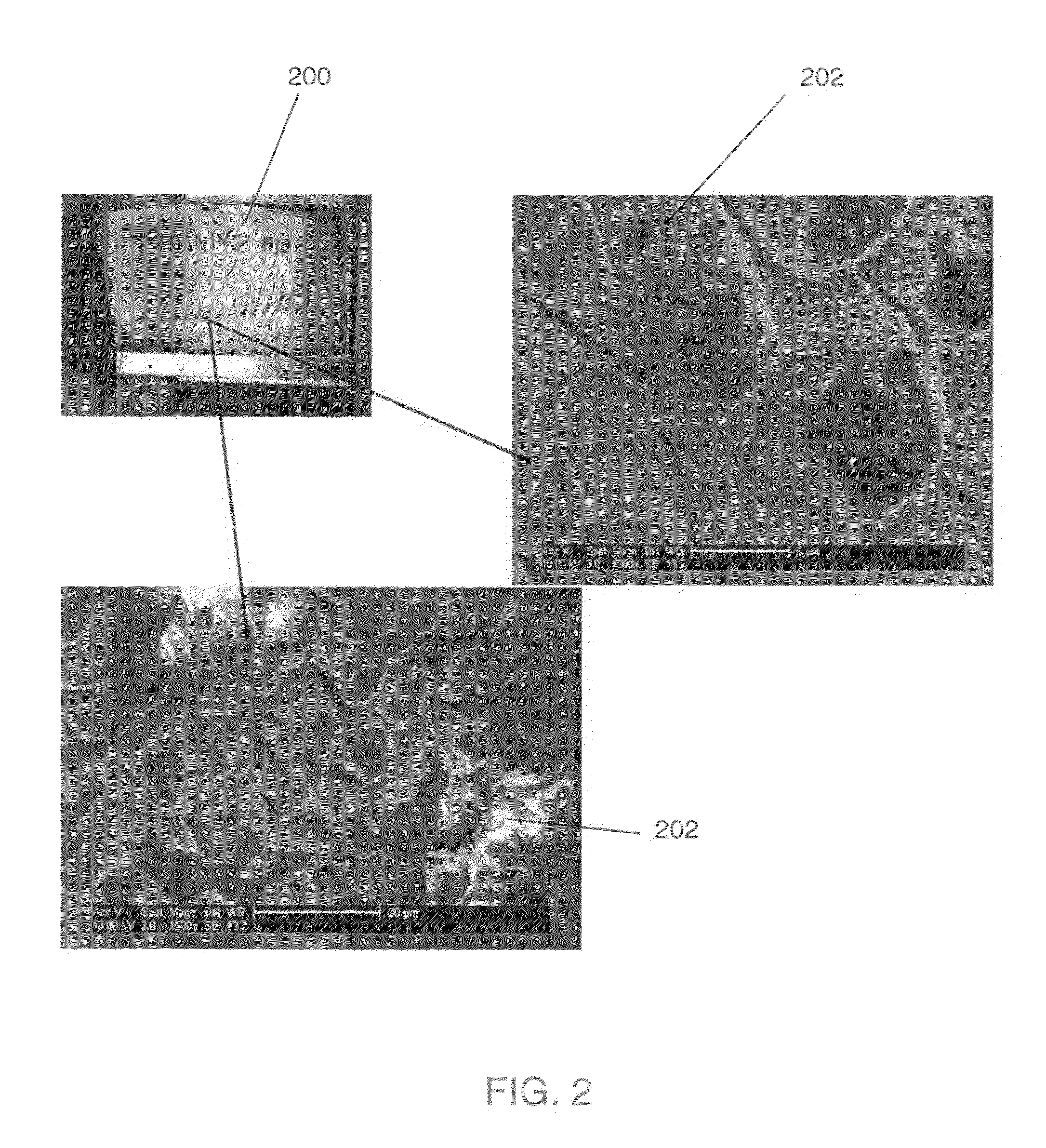Local residual stress measurement and analysis for detection and prediction of damage in thermal barrier coatings
- Summary
- Abstract
- Description
- Claims
- Application Information
AI Technical Summary
Benefits of technology
Problems solved by technology
Method used
Image
Examples
Embodiment Construction
[0022]The present invention provides a technique for detecting the degradation of thermal barrier coatings applied to a substrate, such as a turbine engine blade, and predicting the failure of the barrier coating. The principle of measuring and predicting degradation of thermal barrier coatings is through observing the changes in surface residual stresses. The TBC degrades when oxygen in the atmosphere diffuses through the coating and attacks the bond coat at the substrate. The oxygen reacts with the aluminum (Al) of the coating material, MCrAlY, and oxidizes it. Whenever the process of oxidation depletes the aluminum content in the bond coat, the local residual stress in the vicinity of the oxidized region is altered. This produces local residual stress changes at the top surface or near top surface of the TBC. When complete delamination occurs at the bond coat substrate interface, the compressive residual stress at the top surface or outer surface portion of the TBC reaches zero. ...
PUM
 Login to View More
Login to View More Abstract
Description
Claims
Application Information
 Login to View More
Login to View More - R&D
- Intellectual Property
- Life Sciences
- Materials
- Tech Scout
- Unparalleled Data Quality
- Higher Quality Content
- 60% Fewer Hallucinations
Browse by: Latest US Patents, China's latest patents, Technical Efficacy Thesaurus, Application Domain, Technology Topic, Popular Technical Reports.
© 2025 PatSnap. All rights reserved.Legal|Privacy policy|Modern Slavery Act Transparency Statement|Sitemap|About US| Contact US: help@patsnap.com



